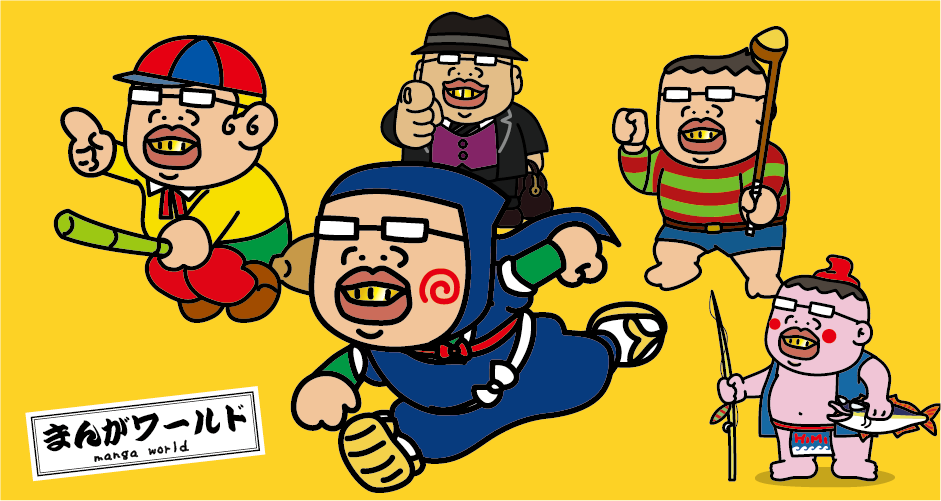Highlights of Izumozaki Town, Niigata Prefecture, with a focus on Echigo Izumozaki Tenryo no Sato
Let’s go and see the sunset of Izumozaki where the sea and the sky are dyed in orange! The sunset from Izumozaki is said to be the largest in the world.
Izumozaki is located approximately in the center of Niigata Prefecture. This beautiful city is well known the song in “Oku no Hosomichi” of Basho Matsuo, “Araumi ya/ Sado ni yokotau / Amanogawa (Turbulent the sea/ Across to Sado stretches / The Milky Way)”. This haiku talks about the scenery of Sado Island commanded by raging waters of the Sea of Japan. In the Edo period, it became the region under Tokugawa Shogunate’s direct control (shogunal demesne). This place was flourished as an uploading port of gold and silver carried out from Sado Gold Mine and also a port of call of Kitamae-Bune. In addition, because the oil was found at Izumozaki from a long time ago, in Meiji period, it also flourished as “The birthplace of the modern oil industry” where machine boring of oil met with success at first time in Japan.
Recently, this is very popular as a view spot of beautiful sunset in the Sea of Japan and also the sunset from Izumozaki is said to be the biggest in the world.The red sunset is very romantic and the sunset slowly setting in the Sea of Japan is very beautiful. If the climatic conditions meet, before the sunset sinks to the horizon, you may see a green flash that green color flash sparkle only for a moment. In addition, the wooden bridge of 102m length, “Yuunagi no hashi (The bridge of the evening calm)” extending from the seaside park beside Nihonkai Yuhi Line, Japan Sea Sunset Line in English, (Route 352) to the Sea of Japan is recently called “Lover’s Bridge”. It is said “When you put chain on the hardtail of the bridge and lock, your love will succeed.”

When looking down from the hill with Ryokan Memorial Hall, you can see the townscape of Izumozaki well. The house of Izumozaki is characterized by its narrow frontage and long depth called “building with a gabled roof”. Because the tax was decided according to the size of the frontage, so inevitably the houses with a long depth were built. In the Edo period, Izumozaki was the area with the highest population density in Echigo (Old name of Niigata), so its “street of buildings with gabled roofs” continues for about 4 km. This cityscape is the longest in Japan.

There is a roadside station “Echigo Izumozaki Tenryo no Sato” along the Nihonkai Yuhi Line (Route 352). “Tenryo Izumozaki Jidaikan (History museum of a shogunal demesne, Izumozaki)” in the roadside station is the facility to bring you back to the Edo period beyond the time of 400 years.
Izumozaki was under Edo shogunate’s direct control (Tenryo, shogunal demesne). It was flourished as an uploading port of gold and silver carried out from Sado Island and a port of call of Kitamae-Bune. Also, it was flourished as an important post-town of Hokkoku Kaido to bring gold and silver from Sado Gold Mine to Edo. Also, the magistrate’s office was set up and it was the first time in the country of Echigo. Shipping agencies and Japanese-style inns were clustered and many people from different types of business gathered together. The crowd at that time was comparable to No.1 population density of Echigo and there were 20,000 people living in the small area between small mountain and about 10km of coast.
In Jidaikan, the magistrate’s office, the ships of assistant commissioner, merchant houses and streets and people’s lives are reappeared and you can experience the time of Izumozaki flourished as a shogunal demesne. Also, as memories of the trip, there is a service allow you to take a photo with wearing the costume of that time.

In “Nihon Shoki”, there is a description that “Burning water and burning soil were offered from Koshi no Kuni (Old name of Niigata)”, but from a long time ago, oil have been collected from many places in Niigata including Izumozaki.
By the end of Edo period, when Western culture came in Japan and the demand of oil increased rapidly, oil development in Izumozaki also became flourished. In 1891, first oil boring by machine have been succeeded in Japan. Also, the excavation of the world’s first offshore oilfield succeeded and it became a representative oil field of Japan at that time. However, the amount of mining has drastically decreased since the time of the Pacific War and the mining has ended in 1985.
After that, the memorial park was established at the site of oil field and exhibits monuments related to oil mining. Even now the natural gas is still coming out, so inside of the park is “fire prohibited”.
There is a roadside station “Echigo Izumozaki Tenryo no Sato)” across the national highway of this park. In this roadside station “Tenryo Izumozaki Jidaikan” was established together with “Oil memorial hall”, and people who do are not interested in oil can also enjoy it.

On 4th of July, 1689, Basho Matsuo stopped by Izumozaki and composed haiku, “Araumi ya/ Sado ni yokotau/ Amanogawa”. In “Basho Garden”, which was arranged to commemorate the 300-year anniversary of Oku no Hosomichi, there are the statue which Basho’s handwriting of “Ginga no Jo (Introduction to the Milky Way)” on and his statues. By the way, opposite of “Basho Garden” across the street, there was an inn “Osakiya” where Basho Matsuo stayed overnight.

When I talk about Ryokan, his appearance of playing hide and seek and handball game with children would be very impressive. Ryokan is from Izumozaki, and he is well known Zen priest in late Edo period who is also known as a poet, a Waka poet and a calligrapher. In Izumozaki, there are many historical spots related Ryokan such as “Ryokando” built at the birthplace of Ryokan, “Ryokan Memorial Hall” where many of his autographs and article left behinds are exhibited and temple related to Ryokan.
There is “Ryokan to Yuhi no Oka Park” next to “Ryokan Memorial Hall”. There are Sado Island on the Sea of Japan in front of you, Mt.Yahiko on right side, townscape of Ryokando and buildings with a gabled roof in below. The view from “Ryokan to Yuhi no Oka Park” is said to be No.1 in Niigata.
Access to Izumozaki
It takes about 1 hour and 40 minutes from JR Tokyo Station to JR Nagaoka Station by Joetsu Shinkansen. About 45 minutes from Nagaoka-Oteguchi bus stop to Izumozaki-Eki bus stop after getting off at JR Nagaoka Station. Get off at Izumozaki-Eki bus stop.










You need to login to comment on an article.